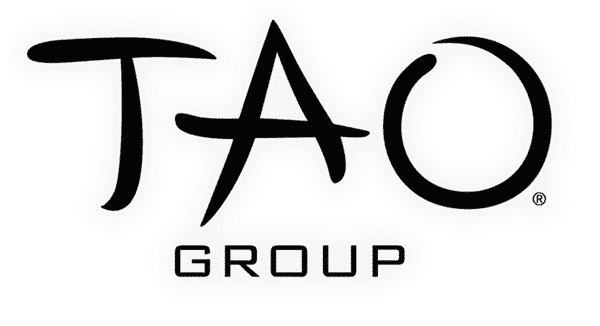
In today’s fast-paced digital landscape, advertising has evolved from traditional methods to highly targeted, data-driven approaches. At the forefront of this transformation are Artificial Intelligence (AI) and Machine Learning (ML) technologies, revolutionizing the way businesses connect with their audiences. From optimizing ad campaigns to personalizing content, AI and ML are reshaping the digital advertising industry, providing unprecedented opportunities for brands to reach and engage their target customers effectively.
Understanding Artificial Intelligence and Machine Learning in Digital Marketing

AI and ML are often used interchangeably, but they represent distinct concepts. AI refers to the simulation of human intelligence in machines, enabling them to perform tasks that typically require human intelligence, such as problem-solving and decision-making. Machine Learning, a subset of AI, focuses on the development of algorithms that allow computers to learn from and make predictions or decisions based on data.
In the realm of digital advertising, AI and ML play a pivotal role in analyzing vast amounts of data and extracting valuable insights to enhance ad targeting, optimization, and personalization. These technologies empower advertisers to deliver more relevant and compelling messages to their audiences, ultimately driving better results and ROI.
Enhanced Targeting and Audience Segmentation

One of the key advantages of AI and ML in digital advertising is their ability to analyze user data and behavior patterns to create highly granular audience segments. By leveraging advanced algorithms, advertisers can identify specific demographics, interests, and behaviors, allowing for more precise targeting. This targeted approach ensures that ads are shown to the most relevant audience segments, increasing the likelihood of engagement and conversions.
AI-powered tools can also continuously refine audience segments based on real-time data, ensuring that ad campaigns remain relevant and effective as consumer preferences evolve. This dynamic targeting capability enables advertisers to adapt quickly to changing market conditions and consumer trends, maximizing the impact of their advertising efforts.
Predictive Analytics and Campaign Optimization

In addition to targeting, AI and ML enable advertisers to optimize their ad campaigns for better performance. These technologies can analyze historical data to identify trends and patterns, allowing advertisers to make data-driven decisions about budget allocation, bidding strategies, and ad creative.
Through predictive analytics, advertisers can forecast future performance metrics such as click-through rates, conversion rates, and return on ad spend. This foresight enables them to adjust their strategies proactively, allocating resources to the most promising opportunities and avoiding wasted ad spend on underperforming campaigns.
Furthermore, AI-powered optimization algorithms can automate campaign management tasks, such as bid adjustments and ad placement, to maximize efficiency and effectiveness. By leveraging real-time data and machine learning algorithms, advertisers can continuously fine-tune their campaigns to achieve optimal results.
Personalized Content and Creative Optimization

Personalization is a cornerstone of effective digital advertising, and AI and ML are instrumental in delivering personalized experiences at scale. By analyzing user data and preferences, these technologies enable advertisers to tailor ad content and messaging to individual users, increasing relevance and engagement.
Machine learning algorithms can analyze vast amounts of data to identify patterns and trends in user behavior, allowing advertisers to predict which ad creatives are most likely to resonate with each audience segment. This data-driven approach empowers advertisers to deliver hyper-targeted ads that speak directly to the interests and needs of their target customers, driving higher engagement and conversion rates.
Moreover, AI can facilitate creative optimization by automatically testing different ad variations and formats to identify the most effective combinations. Through iterative testing and optimization, advertisers can refine their creative assets to maximize performance and ROI, ultimately delivering a more compelling and impactful advertising experience for their audience.
Overcoming Challenges with ML and AI in digital marketing

While the benefits of AI and ML in digital advertising are undeniable, leveraging these technologies effectively requires overcoming certain challenges. One such challenge is the need for high-quality data to train machine learning algorithms accurately. Advertisers must ensure that they have access to clean, reliable data sets to feed into their AI systems, as inaccurate or biased data can lead to suboptimal results and skewed insights.
Another challenge is the complexity of AI and ML algorithms, which can be daunting for advertisers without a background in data science or machine learning. To address this challenge, many advertising platforms offer user-friendly AI-powered tools and interfaces that simplify the process of campaign optimization and audience targeting. Additionally, advertisers can collaborate with data scientists or seek training and education to develop their skills in AI and ML.
Ethical Considerations and Privacy Concerns

As AI and ML become more prevalent in digital advertising, it is essential to consider the ethical implications and privacy concerns associated with these technologies. Advertisers must ensure that they adhere to strict data privacy regulations and guidelines when collecting and utilizing user data for ad targeting and personalization. Respecting user privacy and maintaining transparency about data usage builds trust with consumers and helps mitigate the risk of regulatory fines and reputational damage.
Furthermore, advertisers must be mindful of the potential for algorithmic bias in AI-powered advertising systems. Biased algorithms can inadvertently perpetuate stereotypes or discrimination, leading to negative consequences for both brands and consumers. To address this issue, advertisers should regularly audit their AI systems for bias and take steps to mitigate any identified biases through algorithmic adjustments or diversity in data sources.
Future Trends and Opportunities

Looking ahead, the future of AI and ML in digital advertising holds exciting possibilities for innovation and growth. Advancements in natural language processing (NLP) and computer vision technologies are enabling more sophisticated forms of ad targeting and personalization, such as sentiment analysis and image recognition. These capabilities open up new avenues for advertisers to engage with consumers in meaningful ways and deliver highly relevant and contextualized advertising experiences.
Moreover, the rise of AI-powered virtual assistants and chatbots presents new opportunities for brands to interact with consumers through conversational interfaces. By integrating AI into customer service and support channels, advertisers can provide personalized assistance and recommendations in real-time, enhancing the overall customer experience and driving brand loyalty.
Conclusion

AI and Machine Learning are transforming the digital advertising landscape, empowering advertisers to create more targeted, relevant, and personalized experiences for their audiences. From enhanced targeting and audience segmentation to predictive analytics and creative optimization, these technologies offer unprecedented opportunities for brands to drive better results and ROI from their advertising efforts.
As AI and ML continue to evolve, their impact on digital advertising will only grow, enabling advertisers to stay ahead of the curve and effectively engage with their target customers in an increasingly competitive marketplace. By embracing these technologies and leveraging their capabilities, advertisers can unlock new levels of success and achieve their marketing objectives with greater precision and efficiency than ever before.




































